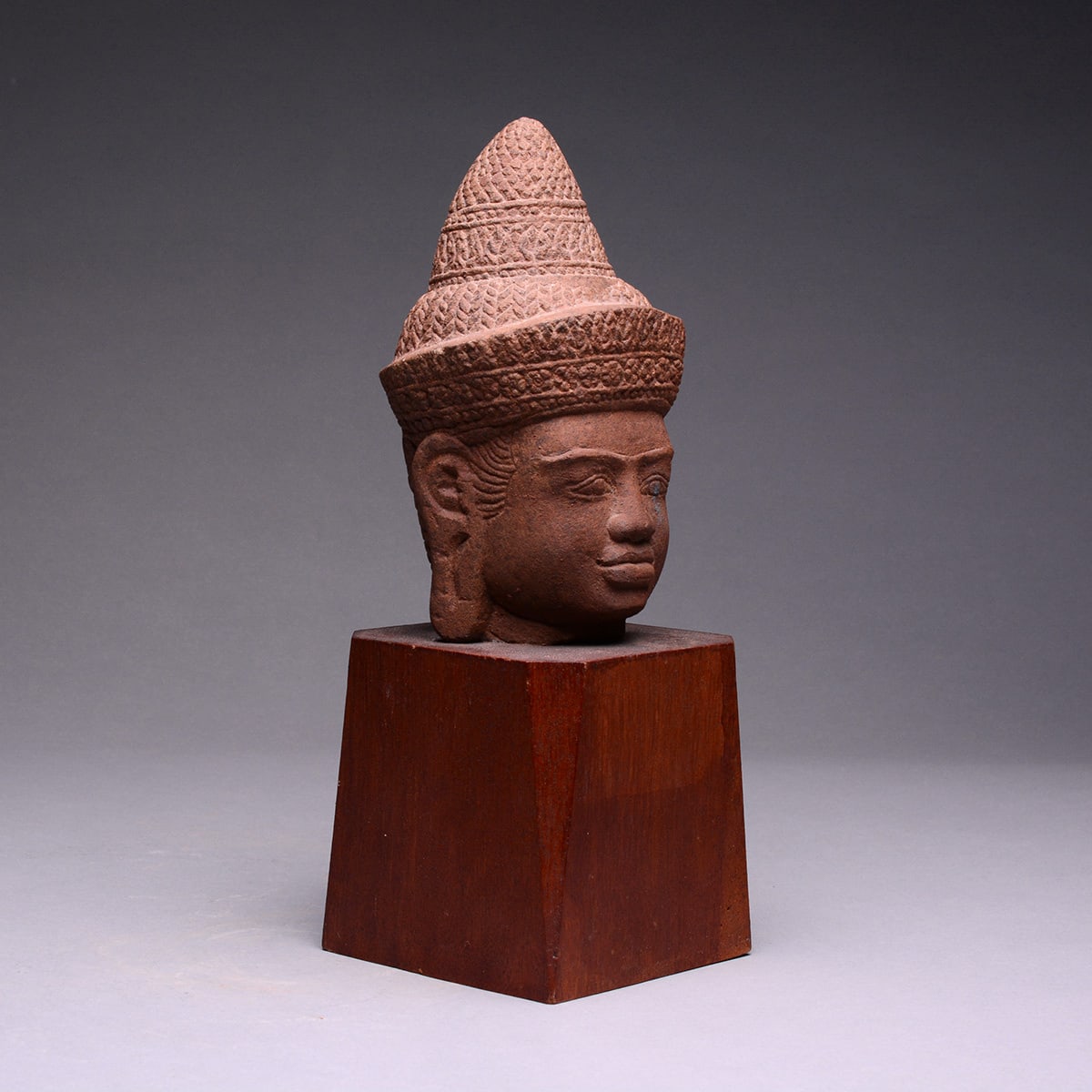Stone Head of a Buddha, 1150 CE - 1350 CE
Stone
height 17.8 cm
height 7 in
height 7 in
SP.607
Further images
The golden age of Cambodian culture was developed the kingdom of Angkor, a powerful and prosperous empire that flourished in northwestern Cambodia. The Angkor kingdom was historically Southeast Asia's largest...
The golden age of Cambodian culture was developed the kingdom of Angkor, a powerful and prosperous empire that flourished in northwestern Cambodia. The Angkor kingdom was historically Southeast Asia's largest contiguous empire controlled much territory in what is now Thailand, Laos and Vietnam. Many temples from this period, like the Bayon and Angkor Wat are left as a reminder of the grandeur of Khmer arts and culture. Angkor's unparalleled achievements in art, architectures, music, and dance during this period greatly influence and inspired many kingdoms in Cambodia, Thailand, and Laos. The Khmer civilization, today embodied by the temples and ruins of Angkor, one of mankind's most astonishing and enduring architectural achievements and the largest religious monument in the world, flourished from 802-1431 A.D. From the great citadel of Angkor, the kings of the Khmer empire ruled over a vast domain that reached from what is now southern Vietnam to Yunan, China and from Vietnam westward to the Bay of Bengal. The original city was built around the Phnom Bakeng, a temple on a hill symbolizing the mountain that stands in the center of the world according to Hindu cosmology. Successive kings enlarged the city, building other temples devoted to various Hindu deities and large reservoirs used for irrigation, which also symbolized the ocean surrounding the holy central mountain. The most celebrated of the Angkor temple complexes is Angkor Wat, constructed under King Suryavarman II (reigned 1113-1150). The Buddhist religion spread throughout the east and nowhere is the artistic rendering of this spiritual religion more expressive than in the 12th and 13th century Khmer culture of Cambodia.
This head of a Buddha illustrates the unique artistic craftsmanship of the Khmer. It is boldly expressive in form yet delicate in its sensibility. Graceful and powerful at once, the combined images of Buddha capture both the aesthetic and spiritual elements of our very soul.
This head of a Buddha illustrates the unique artistic craftsmanship of the Khmer. It is boldly expressive in form yet delicate in its sensibility. Graceful and powerful at once, the combined images of Buddha capture both the aesthetic and spiritual elements of our very soul.









